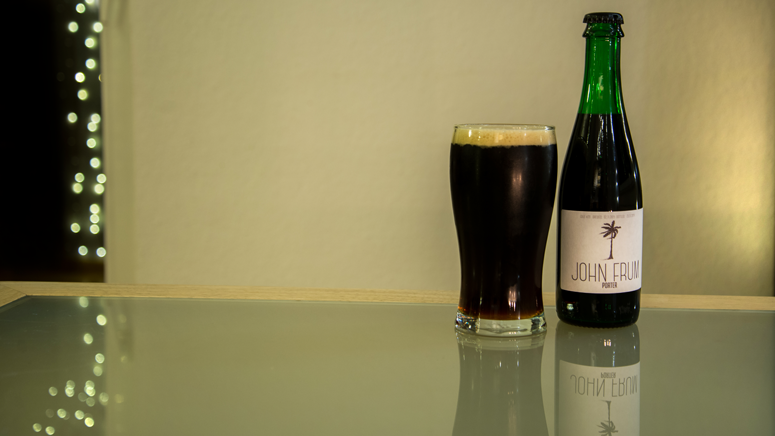John Frum - Tasting

One of the unsolved issues I have with recipe design is how to take into account the fermentability of the wort during recipe design. How fermentable the wort is depends on, among other things, mash schedule, yeast choice, and grain bill.
Higher mash temperatures will result in more complex sugars which are not as easy for most yeasts to utilise. The use of crystal malts has a similar effect. In addition, some yeasts such as Brettanomyces are able to utilise sugars that ordinary brewers yeasts cannot, while many wine yeasts cannot metabolise maltotriose. The combination of these factors makes it quite difficult to calculate the attenuation that one might expect for a beer which deviates from the average.
This porter is a good example of just such a beer. The use of crystal malts, unmalted adjuncts and high mash temperatures means that my estimated of attenuation were off by quite a lot.
I brewed John Frum as a fairly straightforward porter, with the aim of achieving the sort of full mouthfeel that I like in my dark, wintery beers. Thanks to those efforts I expected to have produced a relatively unfermentable wort and consequently, to get quite low attenuation. I bottled after 3 weeks in the fermenter, cold crashing the beer on the balcony now that the temperatures are finally cold enough for that to be possible. At the final count I ended up with an OG of 1.018, which is an attenuation of 70% and a fair bit less than one would normally expect from Nottingham, but not unexpected considering the unfermentable wort.
Appearance
Dark, but almost completely clear, the reddish copper hues just about show through at the narrower parts of the glass. It pours with a dense tan head that hangs about quite a while and leaves a nice bit of lacing on the glass.
Smell
There is are hints of dark fruits, spice and roasty malt with an almost smoky character in the nose, but it's pretty subtle. As the beer warms up the spice becomes more noticable.
Taste
The flavour leads with sweet, caramelly malt which is followed by dried fruits and finally a palate-cleansing bitterness that just about prevents the beer tasting too sweet. The mouthfeel is slick and oily, coating the palate pleasantly and never tasting too thin. I think this is likely to be due to the rye and oats in the grain bill. Both rye and oats have a tendency to add a somewhat thick, oily character to beer thanks to the large amounts of beta-glucans they contribute to the wort. The medium carbonation is just about right here, lending some brightness to what might otherwise be a slightly heavy feeling beer.
Final Words
This has proved to be a rather popular beer with my friends, and two weeks after bottling, most of it is already gone. I will have to hoard the remaining bottles if I'm to have any chance of finding out how it ages over the next few months.